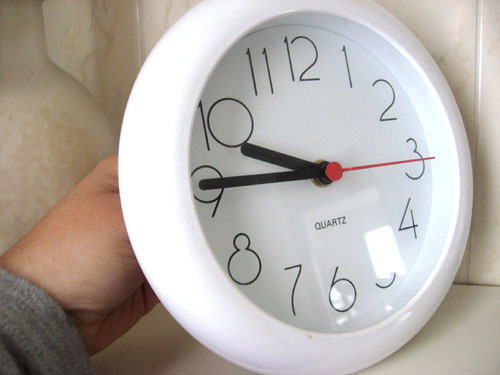Don’t spring forward; fall back!

Photo by the Italian voice on Flickr
Remember to set your clocks back an hour on November 7.
It’s that time of year again! Daylight Saving will end on Sunday November 7, where we will have to set our clocks back one hour. But what is Daylight Saving? What’s its purpose? Who invented it? Well, you have come to the right place, because we will give you the answer here, some background information, its history, and you might learn a thing or two in the process.
Daylight Savings, also known as Daylight Saving Time (DST), is a practice where clocks are adjusted or moved one hour forward during warmer months. That way, darkness will fall at a later time, and we can make better use of natural daylight. Around 70 countries implement DST presently. Standard time is when that hour is taken back and early evening darkness resumes.
DST was suggested by George Hudson in 1895. He was an entomologist in New Zealand, and proposed the idea for the sole purpose of having two extra hours of daylight to go bug hunting in the summer. But it was first implemented during World War I in Germany, in 1916, by moving clocks forward one hour, to use less power for lighting and save fuel for the war. Then the United States followed suit in 1918, because of a bill that introduced the idea of a seasonal time shift, but only lasted around seven months. During World War II, Daylight Savings was reestablished, from February 1942 to the end of September 1945.
In 1966, the Uniform Time Act established the idea of a yearly time change, and DST would start the last Sunday of April and end the last Sunday of October. During the oil embargo of 1973, however, Congress ordered a period of Daylight Saving that would last over a year, from January 1974 to April 1975. But it wasn’t very effective, so the United States reverted back to standard time, in October of 1984.
DST began the first weekend of April until the last weekend in October from 1987 to 2006. Then, in 2007, the structure changed once again; DST would start from the second Sunday in March until the first Sunday in November. From that year until now, it has been the same days and hasn’t changed, but in recent times, there has been a push to make DST something that lasts the whole year. Some states have even advocated to make this a law. Some states and territories do not change the clocks annually and some parts of the world also maintain the same time schedule year round.
With that being said, I hope you learned a thing or two about Daylight Saving time. Don’t forget to “fall back” one hour and change your clocks on November 7!

Hey there, I’m Dulce Bernal Ortiz! If you don’t know who I am, I’m a senior at Armijo High School, serving this year as your People Editor (second...









